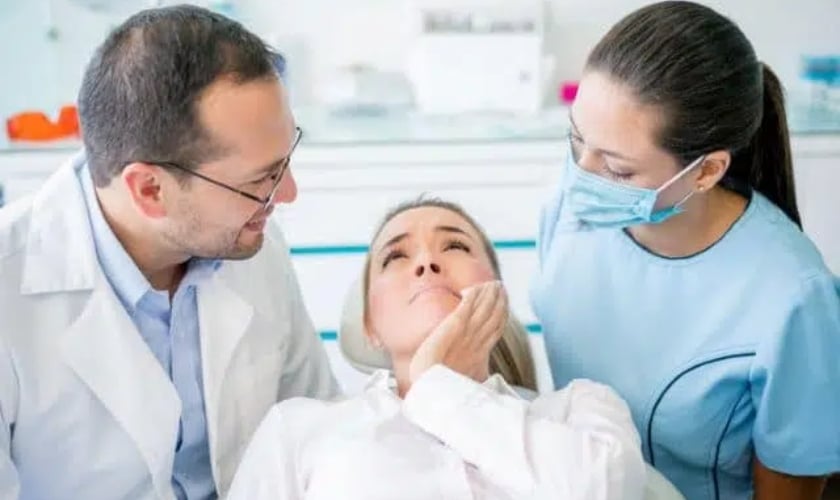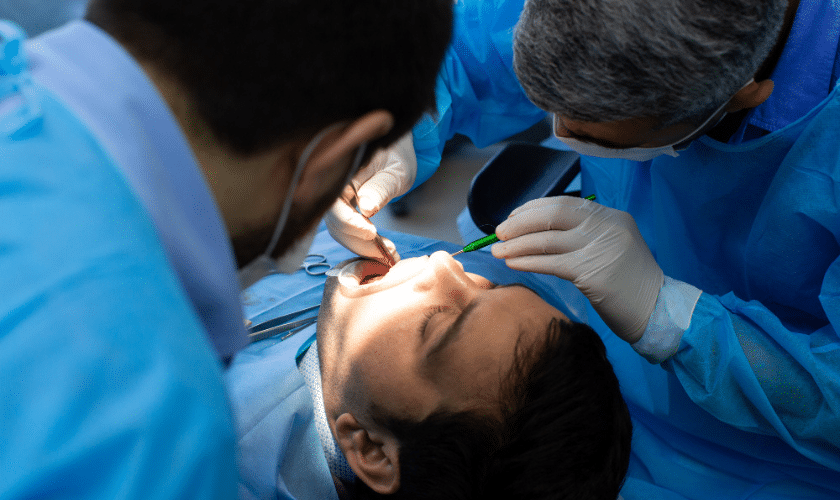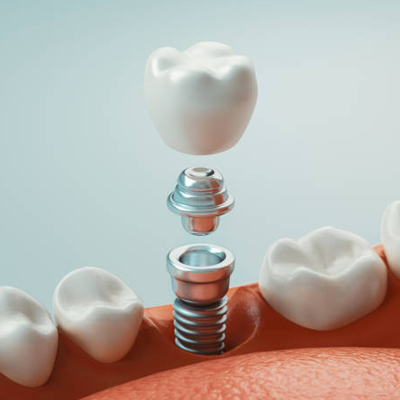
Dental crises can occur at any time, causing extreme pain and agony. In this blog article, we will look at the critical function of emergency dentists in delivering rapid dental treatment. Emergency dental doctors perform an important role in relieving pain, avoiding additional damage, and restoring oral health, from diagnosing and treating toothaches to dealing with dental injuries. We will also stress the significance of obtaining emergency dental treatment to guarantee prompt intervention and minimize long-term repercussions.
Services Offered By An Emergency Dentist:
Severe toothache diagnosis and treatment: If you have a severe toothache, an emergency dentist can swiftly check your teeth and gums to determine the underlying problem. They will then recommend appropriate treatment choices, including dental fillings, root canals, or extractions to relieve pain and fix the problem.
Emergency tooth extraction and root canals: An emergency dentist can do rapid extractions or root canals if a tooth is badly decaying or diseased. These operations are designed to remove the damaged tooth or to eradicate infection in order to prevent future damage and suffering.
Management of dental trauma or injury: If you have experienced dental trauma as a result of an accident or a sports-related incident, an emergency dentist can help. They can use bonding procedures to repair damaged teeth or relocate knocked-out teeth to restore your smile and oral functionality.
Dislodged or broken teeth treatment: Emergency dental doctors are competent in stabilizing and restoring dislodged or shattered teeth. They may utilize splinting procedures to reposition the teeth or dental crowns to preserve and reinforce damaged teeth until a permanent solution is found.
Relief for abscesses and oral infections: When faced with oral infections or abscesses, an emergency dentist can provide prompt relief. They can drain abscesses, prescribe antibiotics to control the infection, and offer pain management techniques to alleviate discomfort and prevent the spread of infection.
Emergency dental doctors provide a variety of treatments to ensure that urgent dental disorders are handled quickly, minimizing discomfort, reducing complications, and restoring oral health. Seeking their advice in the event of a dental emergency is critical for prompt intervention and successful treatment.
Techniques And Procedures Used:
Local anesthesia for pain management: Emergency dentists use local anesthesia to enhance patient comfort throughout treatments. This numbing substance is administered to the afflicted region, thereby inhibiting pain signals and making therapy painless.
X-rays and imaging for accurate diagnosis: To effectively diagnose dental crises, emergency dentists rely on X-rays and imaging technologies. These diagnostic technologies generate comprehensive pictures of teeth, jawbones, and surrounding tissues, which aid in determining the amount of injury or infection.
Emergency dental restoration procedures: To address acute difficulties, emergency dental doctors use a variety of dental repair treatments. Temporary crowns or fillings may be used to stabilize damaged teeth, maintain the dental structure, and restore functioning until a permanent remedy can be adopted.
Temporary dental crowns or fillings: An emergency dentist can place temporary dental crowns or fillings in circumstances when a tooth has been badly injured. These temporary restorations not only preserve the tooth from additional damage but also aid in the maintenance of good bite alignment and aesthetics until a permanent replacement can be produced.
Emergency dentists can efficiently manage pain, precisely identify crises, and give interim remedies to stabilize teeth and protect oral health by employing various techniques and treatments. This enables immediate intervention and lays the groundwork for long-term treatment planning, ensuring that patients undergoing dental crises receive the best oral care.
Importance Of Seeking Immediate Care:
Risks of postponing dental emergency care: Postponing dental emergency treatment might have catastrophic implications. A severe toothache, for example, may indicate an underlying infection or decay that, if left untreated, might develop and cause more serious harm. Delays in therapy can also lead to greater pain, discomfort, and difficulties completing routine tasks such as eating and speaking.
Long-term effects of ignoring dental crises: Ignoring dental emergencies can lead to long-term oral health problems. Ignoring a dental injury or a loose tooth might result in tooth loss or misalignment for life. Untreated infections can lead to more serious problems, such as gum disease or abscesses, which may necessitate more intrusive and costly treatments in the long term.
The following are the advantages of rapid examination and action by an emergency dentist: Seeking prompt care from an emergency dental doctor has a number of advantages. For starters, it enables prompt diagnosis and treatment, preventing the condition from escalating.
Prompt action can relieve pain and suffering, allowing people to continue their normal activities. Furthermore, early treatment frequently results in a better prognosis and a higher possibility of retaining natural teeth, lowering the need for future more invasive procedures.
By emphasizing the importance of seeking immediate care for dental emergencies, individuals are encouraged to prioritize their oral health and promptly address any dental issues that arise. Timely intervention can minimize risks, prevent long-term consequences, and promote overall oral well-being.
Emergency dentists are critical in responding to dental crises by providing rapid care, diagnosing severe toothaches, conducting extractions, managing oral injuries, removing dislodged teeth, and treating infections. For accurate diagnosis and temporary restorations, they employ procedures like local anesthesia, X-rays, and imaging. Delaying therapy might result in higher risks and more expensive treatments. Maintaining a healthy smile requires prioritizing oral health.










